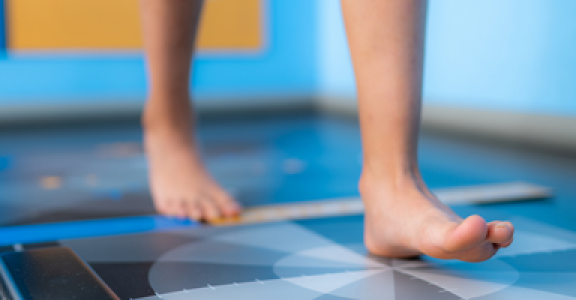RSscan is a technology company that develops biomechanical measurement equipment and analysis software to objectively evaluate human motion. The footscan® pressure measuring system was launched in 1998 and has been deployed worldwide in the medical and retail sectors, and in biomechanical research centres. Applying more than 4,000 sensors per 50 cm, the system captures the pressure on the sole of the foot during motion, at a frequency of up to 500 Hz. For the end user, the analysis software converts the detailed data collected into useful metrics, such as the degree of overpronation (a condition in which foot rolling is uneven when running).
The data on the foot rolling is separated into data on the various anatomical regions. This segmentation algorithm relies on a full foot roll action, which is problematic when only part of the foot lands on the pressure plate, as is the case with a person running with a forefoot strike pattern. In response to this challenge, RSscan teamed up with the Sirris experts from the EluciDATA Lab to search for a method that can automatically identify a forefoot running style and devise a segmentation algorithm that can be applied to a partial footprint.
Identifying running styles
The most common running style is characterised by a heel strike and a gradual roll to the forefoot. However, a forefoot strike can be observed in some runners, more frequently used when running at higher speeds. In this style, the heel makes minimal contact with the ground. An analytical approach was developed to automatically differentiate between running styles, based on dynamic characteristics of the centre of pressure, the point where the forces active in the body are in balance. For each different running style, the trajectory of the centre of pressure has its own distinctive shape and length. In the case of a forefoot running style, the trajectory of the centre of pressure has a non-monotonic progression with large(r) displacement.
Reconstructing foot roll
In order to reconstruct the anatomical regions of a partial footprint, a methodology was developed based on image processing. The first step is to identify a personal foot-specific template, as each single foot is unique. This template image covers the entire footprint, for both the subject’s left and right foot. It is analytically derived from the subject walking a few steps on the footscan® pressure plate: based on all the steps taken, the system selects the footprint that most closely resembles the other footprints on average.
Next, each individual running footprint is automatically aligned with the template for the subject. To do so, an entire series of image transformations (horizontal and vertical shifts and rotations) are applied to the partial footprint. For each transformation, the system calculates the extent to which each transformed partial footprint corresponds to the person’s foot-specific template. The transformation with the best match is selected.
Finally, the anatomical segmentation of the template is transformed according to the selected transformation and is superimposed on the partial footprint. Tests confirm the effectiveness of this approach in approximating anatomical segmentation.





